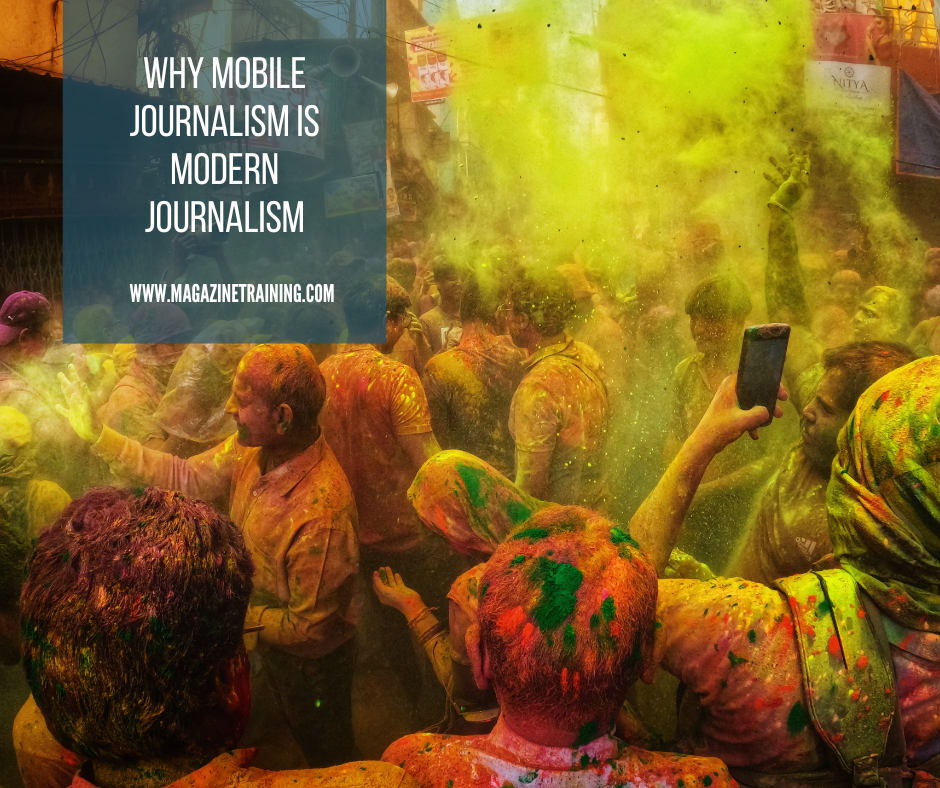
More than five billion people have mobile devices today, with studies suggesting that over 70% of internet users will be accessing the internet solely through their smartphones by 2025.
The growing population of smartphone users is changing how we see and consume information: from the filming of police violence in the U.S. to using smartphone text chains to evade government censorship in Zimbabwe, mobile journalism, or “MoJo,” is using the ubiquity and ease of use of smartphones to empower an entire new generation of journalists.
Today, we released a new toolkit, available in English, Arabic, French and Portuguese, that includes eight social media-friendly videos produced by Seen (formerly Hashtag Our Stories) with tips to help reporters globally improve their mobile journalism. I sat down with Seen co-founders Yusuf Omar and Sumaiya Omar, as well as Community Lead Charlotte Maher, to discuss journalism in the age of smartphones and why reporters should consider the possibilities of mobile journalism:
IJNet: What advice would you give someone just starting out in mobile journalism?
Yusuf Omar: There is so much low-hanging fruit that is ripe for the taking. There’s a huge digital opportunity, and traditional media organizations are slow and unable to move quickly. So there’s a massive opportunity for young people to say, we’re going to help fix these legacy media organizations, or we’re going to form our own company.
Young journalists too often wait for someone to give them the opportunity on a plate. If you want to be your country’s best food reviewer, you have a mobile phone in your pocket, what are you waiting for? If you want to be a travel reporter, go out there and start traveling.
It’s a cliché thing, but there’s also that 10,000 hour rule. We did 200 videos on Facebook before anything remotely went viral. Today, we do 1 billion views a year, we have 5 million subscribers, and that’s been after four years of learning. You have to start publishing: don’t be precious, just get it out there and look at how the audience responds.
Charlotte Maher: That’s the key message, that’s what we tell everyone we work with: just get out there. There are so many stories, and you have a mobile phone in your back pocket to tell them with.
Sumaiya Omar: Something we learned early on is that things can be shaky, and it doesn’t have to be perfect. Just put stuff out there, the more you do the more you understand your audience, the more you understand what people are looking for in your content.
How did your ideas behind mobile journalism start?
Y. Omar: In 2014, I had the opportunity to travel to Syria to cover the Syrian Civil War. Back then I realized two things: one, I never wanted to travel that close to a war zone again — it was prohibitively dangerous, and I feel lucky to have come out unharmed. Two, I realized how many storytellers and journalists had lost their lives there. I wanted to one day be able to train communities in Syria and around the world on how to tell their own stories. From an early point I came to the realization that training communities was a really important way to tell stories.
by Devin Windelspecht, International Journalists’ Network
Photo by Dibakar Roy on Unsplash
Related posts
Magazine Training International’s mission is to encourage, strengthen, and provide training and resources to Christian magazine publishers as they seek to build the church and reach their societies for Christ.

